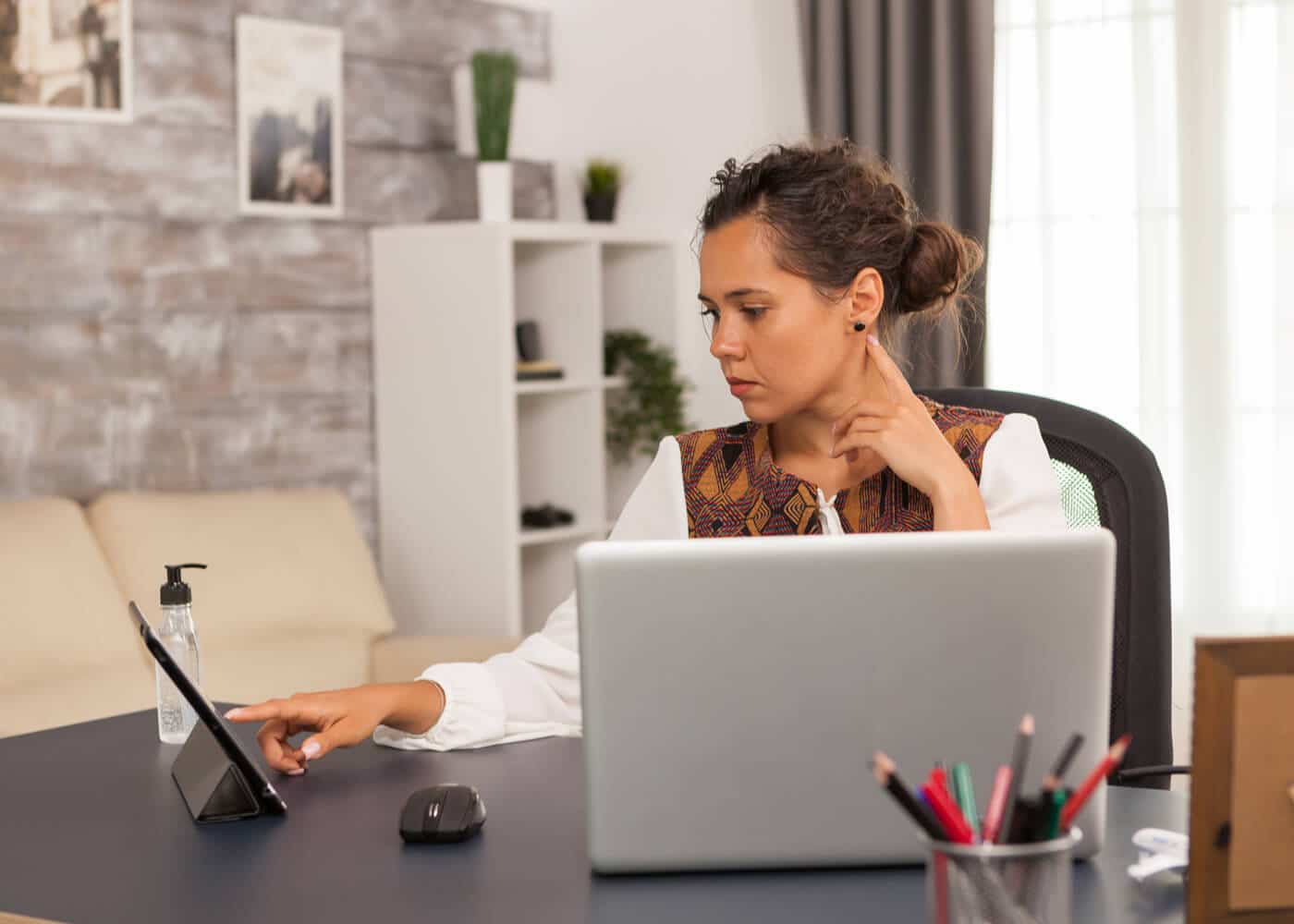
Whether you’re new to working from home or have been at it for years, it’s a good idea to take an inventory to ensure you have an ergonomic home office. Your spinal medicine specialist at the Southeastern Spine Institute offers a wealth of tips for setting up your home office to prevent back, shoulder and neck problems.
What Is an Ergonomic Home Office?
First, an ergonomic home office is comfortable. Taking care of your body’s natural form and inclinations should feel good. When you don’t align your workstation to your body’s needs, it usually feels awkward — or it will eventually.
Additionally, an ergonomic office space is easy to maneuver and takes into account the space available, the lighting and your budget. Ideally, the most effective ergonomic home office has:
- An adjustable desk chair that conforms to your back’s natural — and correct — posture.
- A desk under which your knees can comfortably fit at a 90-degree angle and have sufficient room for your feet to rest firmly on the ground. If the desk is too high, use a footrest to achieve the correct angle.
- A monitor that sits at eye level, ideally lining up the top of the monitor to your eye level. It should be between two and three feet away when you’re seated.
- Enough room on top of the desk to fit items that you use continuously while you work, such as the printer, telephone, a calculator and notepads, so you don’t have to twist to reach them.
- A phone with a headset or earbuds if you spend most of your working time on the device. This is especially crucial if you type or take notes while talking.
- Suitably placed mouse and keyboard that allows you to rest your elbows on the arms of the chair and keep your wrists straight while typing and moving the mouse. Consider adding a separate keyboard and mouse if you rely solely on a laptop.
- Off-centered lighting that doesn’t add glare to your computer screen, but gives you sufficient light to see everything well.
- Shelves, bookcases and filing cabinets that are within easy reach from your rolling chair or by standing and moving to them through an unobstructed path.
The Risks of Not Working Ergonomically
You quickly notice when your body doesn’t like your position at the desk. Your lower back starts aching or your shoulders begin tightening up. And while you may think you can work out the kinks every day after working in an unhealthy space, consider the long-term consequences before you let the situation go too long.
Lower back pain is the most common problem associated with prolonged poor posture. The discs, joints, ligaments and muscles in your lower back become strained and cause discomfort that could eventually lead to or exacerbate existing conditions such as:
- Curvature of the spine
- Muscle spasms
- Pinched nerves
- Shoulder, neck and middle back pain
- Decreased circulation
- Poor digestion
- Migraines and tension headaches
In addition to reducing and preventing back pain issues, an ergonomic home office helps you avoid:
- Neck pain from looking at a monitor that’s not at eye level. And holding a phone between your shoulder and ear leads to pinched neck nerves and shoulder strain.
- Carpal tunnel syndrome, which is a common problem when the tunnels that protect the nerves in the back of your wrists and hands become inflamed.
- Eye strain from glare of the computer screen, coupled with poor side lighting.
- Sore muscles from undue pressure on the backs of your thighs.
What to Do When Back Pain Strikes Anyway
No matter how much time and effort you put into creating an ergonomic home office, there may be days when your back feels achy, your shoulders tense up and your eyes get scratchy. Get up from the desk and move around on a regular basis. Stretch, dance to a favorite tune or just walk around the house.
And when back, shoulder or neck pain becomes persistent, check in with your doctors at the Southeastern Spine Institute to prevent serious complications. They pinpoint the cause of your discomfort with advanced diagnostics and have state-of-the art treatment plans to provide you with relief.
